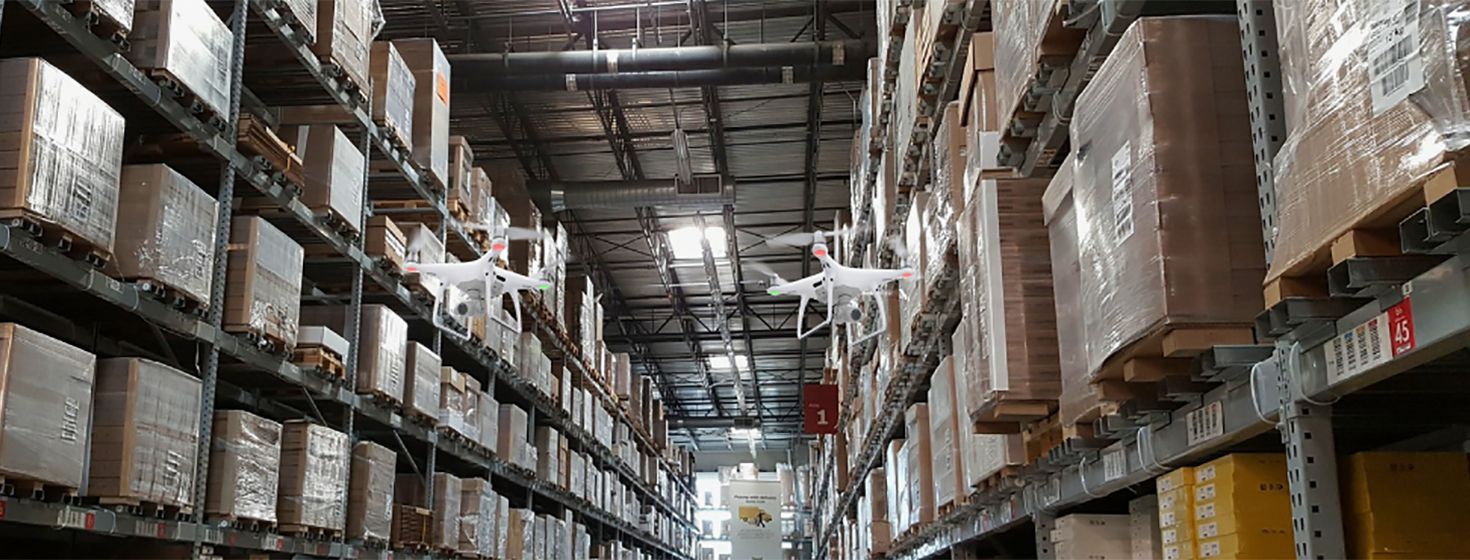Warehouse Automation - Inventory Management using Drones
FlytBase, Inc., an enterprise drone automation company, has released a white paper titled “Drone Automation for Warehouse 4.0” that highlights the role of autonomous drones in the digital transformation of warehouses.
Driven by safety, cost and revenue benefits, warehouses across the world are adopting technologies such as Internet-of-Things, Artificial Intelligence, and Unmanned Aerial Vehicles.
Drones are playing a central role in the intelligent automation of warehouse operations – given their ability to fly & hover autonomously, avoid obstacles, navigate indoors without GPS, land precisely on docking stations, operate in fleets and be remotely managed.
The business benefits from drones are significant and immediate given low capital expenditure & infrastructure investments, access to reliable, off-the-shelf drone hardware, and SaaS offerings for warehouse automation.
API-based integration makes it easy for existing warehouse management systems to onboard autonomous drone missions and data into enterprise workflows.
Capabilities such as remote drone operations over 4G/5G connections, real-time high-quality video recording, and unified dashboards can extend the use of drones to warehouse use-cases such as perimeter security, rooftop inspections, detecting leaks & corrosion, external surveillance, etc.
Pioneering warehouse stakeholders have successfully concluded proof-of-concept projects on multiple use-cases eg. cycle counting, real-time inventory identification and drone barcode scanning - these involved executives from R&D, innovation, digital transformation, IT, operations, and continuous improvement.
They have now matured to pilot programs that involve repeatable missions of drone fleets – thus realizing meaningful value for a wider set of business cases - and intend to soon expand to large-scale production deployments of drone fleets, across their global operations.
While the business case for the adoption of drones for warehouse inventory search, counting and audit are strongly compelling, two key factors determine the success and RoI of drone investments:
- The ability of drones to reliably, safely and repeatedly navigate indoors in an environment with no GPS, continuous human activity, high-value inventory and moving obstacles such as forklifts.
- How accurately a fleet of autonomous drones can locate and identify specific aisles, racks, pallets, slots, and items - despite markers (eg. barcodes) that are covered by dust, wrapped in plastic, damaged during transit, visible only at angles, or even missing.
Other factors to be considered include continuous autonomous flights, ambient conditions, rate of inventory turnover, ease of integration with WMS, frequency of cycle counts, size and layout of each warehouse, time to set up and charge the drones, aisle widths, length of shutdowns, and many more.
FlytBase is pleased to share their learnings from customer engagements to help drive broader adoption of drones by warehouses, driven by intelligent software, commodity hardware, and seamless integration.
With an approach that combines multi-sensor data, computer vision, deep learning, modular architecture, hardware-agnostic OS layer, and multiple fail-safe mechanisms, software providers can accelerate the Warehouse 4.0 trend towards true and full automation.
How Does it Work?
Warehouses can quickly and easily adopt drone automation for inventory counting and other use-cases by starting with a proof-of-concept project that soon matures into a pilot program, and eventually full-scale deployments across all facilities. A typical PoC can be completed in less than 3 months, with a few commodity drones, FlytBase solution, and involvement of key stakeholders eg. R&D and innovation executives, warehouse GMs, VPs of Operations and Continuous Improvement.
Download the White Paper: Drone Automation for Warehouse 4.0
Article topics
Email Sign Up

















